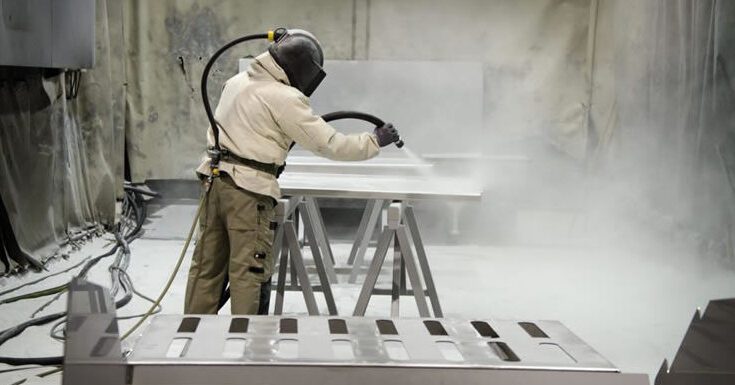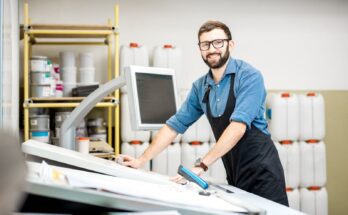Sandblasting (also known as abrasive blasting) is a surface finishing process that involves the use of a specialist machine.
Sandblasting machines propel abrasive media against a surface at high speed to either smooth a rough surface, add texture to a smooth surface, shape a surface, or remove contaminants (i.e. rust, old paint, etc.)
To understand how sandblasting machinery works, it helps if you know a little bit about the equipment required.
What are the components of a sandblasting machine?
Although there are various types of sandblasting machines on the market, they are usually made up of the following:
- Blast hoses – an integral part of the sandblasting process, the blast hose transfers compressed air and abrasive from the blast pot to the nozzle.
- Blast pots – otherwise known as the media reservoir, the blast pot helps to maintain the required pressure for blasting operations. They often vary in size to suit different applications.
- Nozzles – attached to the end of the blast hose, a nozzle accelerates air and abrasive material onto the surface. The nozzle’s taper and inlet length determine the speed and pattern at which the abrasive exits.
- Inlet and outlet valves – these monitor the flow of air and are essential components for sandblasting machines. Remote control valves allow you to safely control the machine from the nozzle, pressurising and depressurising the blast pot.
- Media valve – located at the bottom of the blasting machine, this regulates the flow of abrasive from the blast pot. Abrasive media valves typically have two inlets, one for air and another for abrasive, while the outlet carries both through the blast hose.
- Abrasive metering valve – sometimes called a grit valve, the abrasive metering valve uses pressure to control the amount of grit travelling through the blast hose to the nozzle.
How does it work?
There are two types of abrasives used with sandblasting machines and air compressors:
- Reusable
- Expendable
Reusable media is exactly that – material that can be used over and over again. It’s the most economical option as it minimises waste. Examples include steel grit, aluminium oxide, glass bead, and steel shot.
Expendable abrasives are the opposite. They cannot be reused or recovered, and include things like iron silicate, garnet, olivine, and stonegrit, to name just a few.
After choosing a suitable abrasive, the next step is to load it into the machine.
The sandblasting machine is connected to a conventional air compressor that, when activated, pushes the media through the nozzle.
As the abrasive particles strike the surface, they create a smooth, even texture – perfect for cleaning, deburring, removing paint and coatings, and shot peening.
Invest in a sandblasting machine
When it comes to purchasing a sandblasting machine, it pays to choose a reputable company with vast experience in the industry. This way, you’ll benefit from top-quality equipment and expert advice whenever you need it.
Surface Finishing Equipment Group (SFEG) is the UK’s leading supplier of abrasive blasting equipment. They stock an extensive range of blast pots, accessories, and spare parts, and guarantee some of the most competitive prices around.
Why not take a look at their collection today?



